Silkscreen printing on metal is an important and flexible technique that can be used in many different fields.

You can make long-lasting, bright, and complicated patterns on metal surfaces with this.

Silkscreen Printing on Metal: An Overview
Silkscreen printing on metal materials is widely used, such as a variety of metal signs, metal packaging containers printing.

Silkscreen printing on metal is a complex process, can be divided into pre-press treatment of metal materials, printing, post-press treatment.
- Pre-printing treatment, including metal surface degreasing, polishing, anodizing, sandblasting and painting, etc.;
- Printing and ordinary screen printing is not very different, characterized by: because of the requirements of the printing ink layer function and surface effect of different, the use of a wide range of inks.
- Post-printing treatment includes corrosion, polishing, oil spraying and so on.
The process of silkscreen printing involves putting ink on a surface by passing it through a mesh screen that has designs cut into it.

This method was first made for cloth, but it has since been changed to work with many other materials, even metal. It is a popular choice for both mass production and artistic expression.

This method works well for metal items like industrial panels, machinery signs, promotional items, and custom-made decoration pieces.

It needs to be carefully prepared and finished before it can be used on metal surfaces.
History of Silkscreen Printing
The silkscreen printing was created around 1900 for show and advertising reasons.
In the 1950s, this method became popular among fine artists because it could be used to make complicated patterns with stencils (1).

By 1907, Samuel Simon, an Englishman from Manchester, had invented a better, more stable way to print on silk that included squeegees for better results (2).

In the 1960s, screen print on metal was a big part of the Pop Art trend.
The technique was used by famous artists like Andy Warhol to make bright pictures. The Campbell’s Soup and Marilyn Monroe drawings are two of his most well-known pieces.

The Process of Silkscreen Printing on Metal: Step By Step Guide
When you print silkscreen on metal, you can turn plain surfaces into colorful, intricate works of art.
Step 1: Creating the Design
The first step is to turn your idea into a pattern that can be made and used on the metal sheet.

Step 2: Screen Preparation

A reactive film has to be spread out evenly on the screen mesh. Once it’s dry, the screen goes through a light exposure process with your design on top of it.
The screen then comes into contact with water, which removes any emulsion that hasn’t been exposed.
Step 3: Prepare The Metal Surface
At this step, you want to make sure that the metal sheet is clean and free of anything that might get in the way of the ink sticking or cause unwanted flaws.

Step 4: The Printing Process

Using a squeegee, you press down and move it across the screen, forcing the ink to go through the mesh and leave your pattern on the metal below.
This printing process can be done more than once to make the colors more saturated and even out the coverage, giving every part of your image a bright new life.
Step 5: Curing Phase
The drying process is what turns wet ink into a finish that is sturdy and can be touched.
Curing ink turns it from a liquid to a solid, which makes your image stick to the metal surface forever.

During this phase, different methods can be used, such as baking in a controlled oven or using ultraviolet (UV) light to cure the ink.
Metal Pre-printing Treatment Technology
As the metal silkscreen printing material is a variety of metals, such as steel, iron, aluminum, stainless steel, copper, zinc and so on.

They are characterized by a smooth surface without voids, so screen printing ink can not penetrate into the metal surface and hide in the metal surface of the voids, ink adhesion is not good, the mark is easy to fall off.
In order to improve the surface characteristics of the metal printing material and decorative, must be processed before printing.
Degreasing of metal surfaces
Grease on metal surfaces can be divided into two categories: saponified and unsaponified oils.
The former is mainly a variety of fatty acids glycerol, they can be saponified with alkali reaction, a variety of vegetable oils are such; The latter is mainly a variety of hydrocarbons, they are not easy to react with alkali saponification, such as paraffin, petroleum jelly, motor oil and so on.
Commonly used degreasing methods are organic solvents degreasing, chemical degreasing, electrochemical degreasing. Degreasing treatment directly affects the quality of the next process of surface treatment.
Organic solvent degreasing method
This method is to put the substrate into the organic solvent washing tank immersion. Commonly used organic solvents are gasoline, kerosene, benzene, ketones, and certain chlorinated alkanes, olefins and so on. The use of this method must pay attention to the production of ventilation, protection and fire prevention.
Chemical degreasing method
This method is the use of alkali solution on the saponification of fats and oils, to remove saponified oils and fats; the use of surfactants emulsification, to remove non-saponified oils and fats. Here are several formulations.
| Formula I | This formula is suitable for copper and copper alloy substrates. |
| Sodium hydroxide(NaOH) | 8~12g/L |
| Sodium Carbonate(Na₂CO₃) | 50~60g/L |
| Trisodium phosphate (Na₃PO₄) | 50~60g/L |
| Water glass(Na₂SiO₃) | 5~10g/L |
| Washing temperature | 70~80°C |
| Formula II | This formula is suitable for aluminum, magnesium, zinc and zinc alloy materials. |
| Sodium Carbonate(Na₂CO₃) | 25 ~ 30g/L |
| Trisodium phosphate (Na₃PO₄) | 20 ~ 25g/L |
| Water glass(Na₂SiO₃) | 5 ~ 10g/L |
| Washing temperature | 60 ~ 80°C |
Sodium hydroxide is a strong base, with strong saponification ability, aluminum, zinc and other strong corrosive effect.
Sodium carbonate solution has a certain degree of alkalinity, aluminum, zinc and other amphoteric metals have no significant corrosive effect on the pH of the solution has a good buffering effect.

Trisodium phosphate in addition to the advantages of sodium carbonate, but also has a certain degree of emulsification capacity, at the same time can be easy to water glass washed by water. Water glass has a strong emulsification capacity and a certain saponification capacity, and aluminum, zinc and other metals have corrosion inhibition.

Increase the temperature can improve the saponification reaction rate, the solubility of the saponification products, speed up the circulation of the solution and reduce the viscosity of the oil. At high temperatures the surface tension of the oil-solution interface is reduced, easy to wet. Higher temperatures also greatly increase the speed of oil removal.
But the temperature is too high, will accelerate the reaction of zinc, aluminum and alkali, so that it is corroded.
If in the chemical degreasing process, with spray degreasing agent, at the same time in the solution applied ultrasonic vibration, will get better degreasing effect.
Electrochemical degreasing

This method is to hang the substrate in the alkaline electrolyte cathode or anode. Due to the polarization of the electrode, reduce the oil – solution interface surface tension, electrolysis, electrode precipitation of hydrogen and oxygen bubbles, the oil film has a strong tearing effect, further strengthening the effect of oil removal.
Not only the oil removal speed is much faster than chemical oil removal, but also the oil removal is thorough and effective. The formula of the solution can refer to the formula of chemical degreasing.
Surface polishing of metal before printing
Polishing can be divided into three main categories: mechanical polishing, chemical polishing and electrochemical polishing.
The principle of polishing is when the polishing wheel rotates at a high speed, the substrate and cloth wheel friction produces high temperature, so that the plasticity of the metal is increased, under the action of the polishing force, the metal surface produces plastic deformation, and the convex part is pressed by the concave part of the person, so as to improve the surface of the subtle unevenness, and improve the surface finish.
Mechanical polishing

Mechanical polishing is the use of cloth wheel polishing machine and polishing paste on the need to level the metal surface for polishing, and then fine cloth wheel fine polishing, so that it reaches a mirror finish. Mostly used for anodizing dyeing signs and spinning and refracting signs.
The aluminum plate used for anodic oxidation dyeing sign and spinning and refracting sign is used for decorative treatment.
For the aluminum plate after mechanical polishing, in order to obtain high brightness and good oxidation effect, some also need to carry out chemical polishing and electrochemical polishing.
Chemical polishing solution formulation
| Phosphoric acid | 80%~85% | Working temperature | 90~ 100°C |
| Nitric acid | 2.5% ~ 5% | Time | 2 ~ 3min |
| Glacial acetic acid | 10% ~ 15% |
| Nitric acid | 6%~8% | Water | 5% ~ 10% |
| Phosphoric acid | 40% ~ 50% | Temperature | 40~ 60°C |
| Glacial acetic acid | 35%~45% | Time | 3~10min |
Electrochemical polishing

Electrochemical polishing, on the other hand, is the anodic erosion of metals under specific conditions.
This process improves the micro-geometry of the metal surface, reduces the micro-roughness of the metal surface, and increases the gloss of the metal surface.
The surface quality of chemically polished surfaces is lower than that of electrochemically polished surfaces, and harmful gases are precipitated.
| Phosphoric Acid | 43% (Mass %) | Working Temperature | 80~ 90°C |
| Sulfuric acid | 43% | Voltage | 10~15 |
| Chromic anhydride | 3% | Current density | 8~12A/dm2 |
| Water | 11 % | Time | 5~ 8min |
| Sodium Carbonate(Na₂CO₃) | 350 ~ 380g/L | Working temperature | 94 ~ 98°C |
| Trisodium phosphate | 130~ 150g/L | Voltage | 12~ 25V |
| Sodium hydroxide | 3~5g | Current density | 8~12A/dm2 |
The anode shall be moved or the solution stirred. The cathode is made of stainless steel or ordinary steel plate.
Silkscreen Printing on Metal: Equipment and Materials Used

There are usually three types of printing equiments: fully automatic machines, semi-automatic presses, and hand-screen printing machines.
Here is a list of the main things you’ll need to start a silkscreen printing business:
1. The Printer And The Films
A printer is used to make patterns on clear acetate films, which is important for making accurate designs.
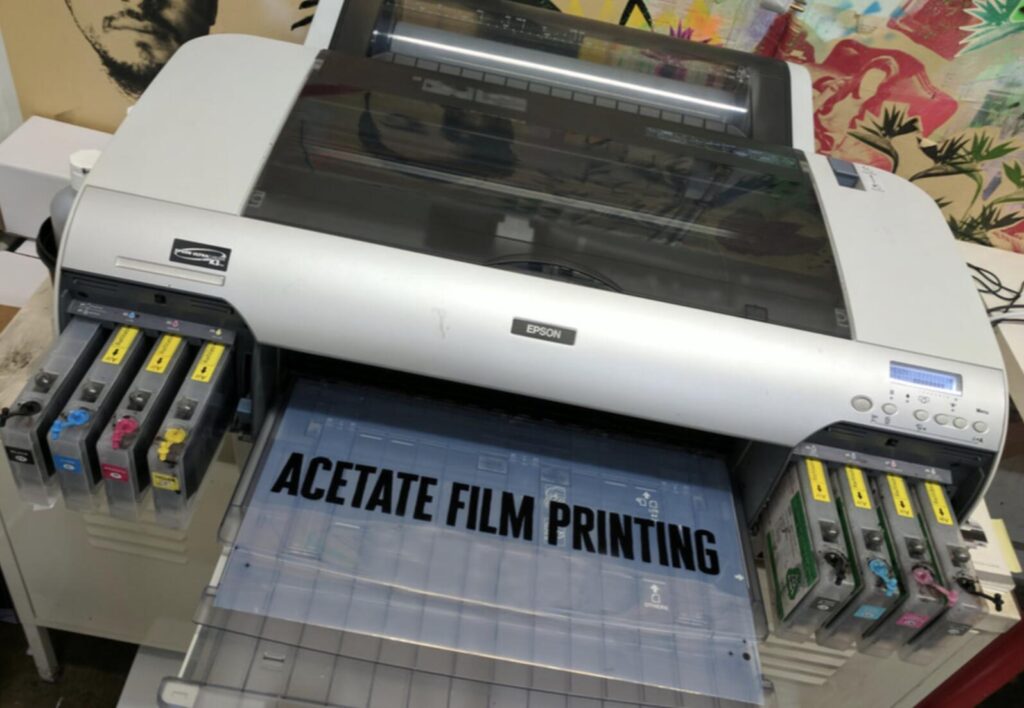
For the printing process, each color in the design needs its film, which is then used to make its cutouts.
2. Press For Printing

A printing press is an important part of setting up a silkscreen because it gives you a stable place to hold and move the mesh screen while you print.
3. Dryer With Belt

To make sure that pictures on metal last a long time, the ink is cured with a belt dryer.
4. Inks
Screen ink for metal refers to the ink used for screen printing on the surface of metal products.
Generally, it includes resist ink, anti-plating ink, two-liquid (two-component) reactive ink, heat-setting ink, ray-curing ink.

Screen ink for metal printing materials such as stainless steel, steel, copper, aluminum, etc.. In addition to stainless steel, most metal substrates are first coated with acrylic resin or melamine resin coating, or by surface plating before printing.
Therefore, metal printing can be divided into two types, one is printed on the coated surface, and the other is printed directly on the metal. The requirements for the ink are mainly fastness to adhesion, ink film hardness, impact resistance, solvent resistance, chemical resistance, grease resistance, water resistance, washing resistance and so on to be good.
Metal screen ink with oxidation polymerization type, volatile drying type, thermal reaction curing type, ray curing type and other drying forms, their linking materials are different.
Oxidation polymerization type ink
Oxidation polymerization type ink mainly use alkyd resin as linker. These inks have the advantages of easy printing, light resistance, weather resistance and gloss. The disadvantage is that the drying is slow, solvent resistance and heat resistance is poor. After printing with this type of ink, it can be dried naturally or heated.
Volatile drying inks
Volatile drying inks mainly use nitrocellulose, polyester resins, cyclized rubber, phenolic resins, acrylic resins, etc. as ink linker resin. After printing with this type of ink, heat drying can be used, drying at room temperature takes about 20 ~ 40 min. this type of ink in addition to red, other colors of ink has a strong weather resistance, mostly used for metal plates, metal foils and metal coating surface and other materials printing.
When silkscreen painting on metal, the type of ink used is very important for making sure the picture sticks well and lasts a long time.
Thermal reaction curing ink
Thermal reaction curing ink has a one-component type and two-component type two, they are epoxy resin as the main component of the ink linker, but also useful for urea-formaldehyde resin, polyester resin, melamine resin. Thermal reaction curing ink is mostly used for electronic components, metal signs, printed circuit boards and other metal materials surface printing.
Two-component Ink
Two-component inks are characterized by good storage stability, curing at low temperatures, and excellent light and weather resistance. The disadvantage is that the ink viscosity gradually rises in the printing, and thus can not maintain a balanced stability of the ink. This kind of ink should be used now, and must be used up within a short period of time, so it tends to have a large loss.
One-component Ink
The advantages of one-component inks are that they are less costly than two-component inks and have less viscosity variation. The disadvantages are that they must be cured by heating, have poor durability, and have poor storage stability.
Ray-curing inks
Ray-curing inks mainly include ultraviolet (UV) curing ink and infrared (IR) curing ink, which are suitable for printing on the surface of various metal materials.
People like solvent-based inks because they dry quickly and last a long time, especially when exposed to the weather.

When exposed to UV light, UV-curing inks dry quickly, making production more energy-efficient while still producing high-quality results. With a hardening agent, two-component inks offer pictures that will last a long time and be resistant to poisons and wear.
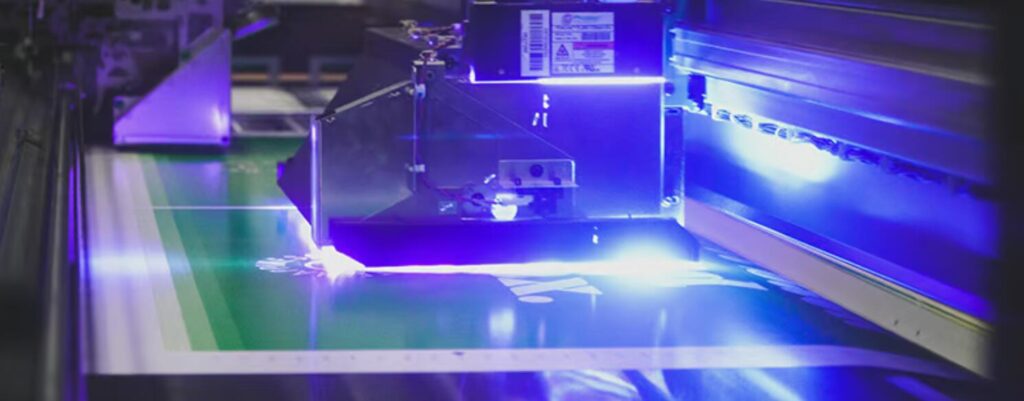
5. Metal Surface

In the same way, it is important to carefully choose and prepare the metal that will be written on. People often use common metals like aluminum, stainless steel, and brass. To get the best print quality, the metals need to be carefully cleaned and degreased, and sometimes they also need to be primed.
6. Mesh Screen
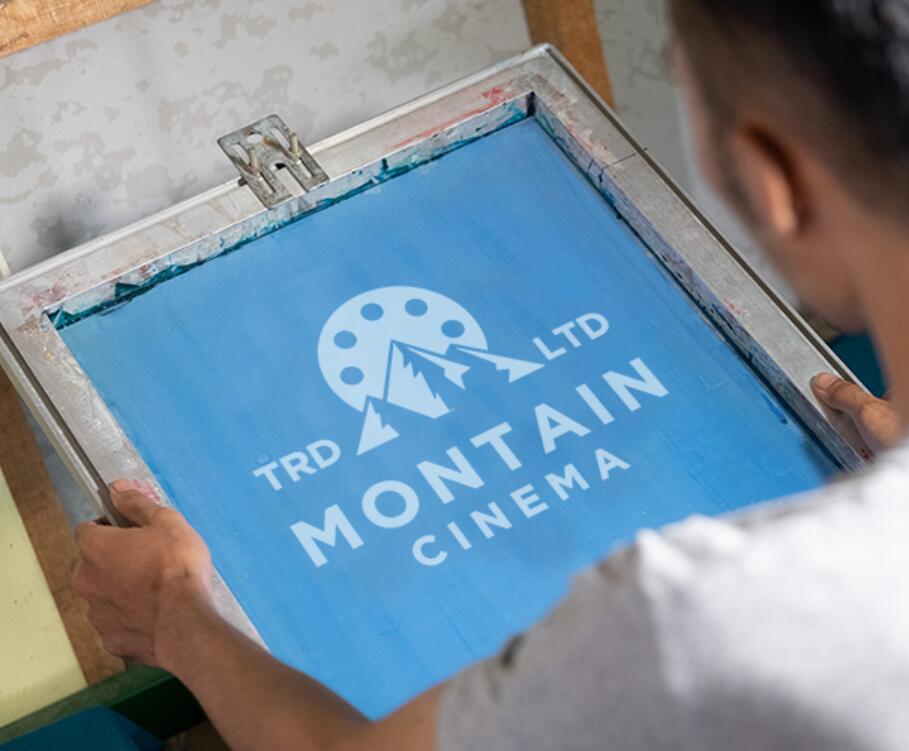
Mesh screens used to be made from silk threads, which is where the name “silkscreen” comes from. These days, most mesh screens are made from polyester fabric.
Different parts of the mesh, like its thickness, roughness, and thread count, can affect the quality of the pictures.
7. Squeegees

Squeegees have a flexible blade and a handle, which is usually made of wood or plastic. They are used to push the ink through the mesh. Based on the needs of the mesh frame being used, the shape and hardness of the squeegee are chosen.
Ink Formulations for Screen Printing on Metal
Examples of screen ink formulations for metal are as follows (in mass percent).
Metal logo printing screen large red ink
| Permanent red F5R | 6% |
| Colloidal calcium carbonate | 24% |
| Alkyd resin with long oil linseed oil | 50% |
| Drying agent | 4% |
| White knuckle oil (distillation range 160 ~ 220°C) | 16% |
Screen Black Ink for Metal Container Printing
| Carbon black | 6% |
| White porcelain clay | 30% |
| Medium and long oil linseed oil alkyd resin | 45% |
| Drying agent | 3% |
| Antioxidant | 0.1% |
| Viscosity reducing agent | 3% |
| Pine oil | 12.9% |
One-component reactive screen yellow ink
| Benzidine yellow HR (P.Y 83) | 7% |
| Precipitated barium sulfate | 10% |
| Light calcium carbonate | 10% |
| Butanol etherified melamine resin (50% solids) | 22% |
| Dehydrated castor oil alkyd resin (60 % solids) | 37% |
| 100# Solvent (Aromatic hydrocarbon solvent) | 12% |
| n-Butanol | 2% |
This ink is mainly used for printing outdoor advertisements and signs by drying at 150°C for 10min after printing.
Infrared curing screen resist ink
| Pigment(phthalocyanine blue or carbon black) | 8% |
| Alkyd resin | 16.2% |
| Phenolic resin | 32.4% |
| Mineral oil | 23.5% |
| Paraffin wax | 19.4% |
| Cobalt naphthenate | 0.5% |
Manufacturing process of the ink: Phenolic resin and mineral oil are heated to 200°C to dissolve, and when the temperature is lowered to 150°C, paraffin wax is added and melted with stirring. Then add the alkyd resin at a temperature of 100°C, stirring and mixing, and then add pigment mixing. After cooling to room temperature, use three-roller mill to grind to a fineness of 20μm or less.
The ink layer on the printed circuit board must be dried in an oven at about 100°C or with infrared rays for about 5min in order to make the waxes float on the surface of the ink layer so as to enhance its corrosion resistance.
| Appearance | blue (or black) color paste |
| Viscosity | 3000 ~ 6000 (25°C)/( mPa·s) |
| Fineness | ≤20pμm |
| Drying time | ≤3h |
| Adhesion fastness | ≥3 grade |
| Pencil hardness | 2H |
| Corrosion resistance | Resistant to ferric chloride, copper chloride, ammonium persulfate and other acidic corrosion. |
| Film removal time | ≤1min/20°C |
| Printing performance | When printing with 280 mesh screen, it is non-sticky, non-stretching, without obvious bubbles and pinholes. |
| Storage period | 1 year at room temperature. |
Two-component reactive screen white ink
| Component A | Titanium dioxide (R type) | 40% |
| Epoxy resin | 37% | |
| Glycol butyl ether | 13% | |
| 100#solvent(aromatic hydrocarbon solvent) | 10% |
| Component B | Low molecular polyamide resin | 74% |
| Glycol butyl ether | 10% | |
| 100# solvent (aromatic hydrocarbon solvent) | 16% |
Component A is mixed and dispersed before printing, and component B is mixed with component A at 15% ~ 25% by mass before printing, and the mixed ink must be used up within 6~8h.
The ink can be dried by finger touch for 2~4h; completely dried for 5~7d; heated and dried at 100°C for 15~20min. It is mainly used for metal materials, and can also be used for processing polyolefin and glass surface printing.
Advantages of Silkscreen Printing on Metal
Many businesses use silkscreen painting on metal because it is durable and can be used in many ways.
1. Very Long Lasting
Metal silkscreen pictures last a very long time, so they are great for use outside and in factories.

When used, the paints form a strong link with metal surfaces that keeps them safe from chemicals, weather, and UV rays.
2. Efficient Use Of Money
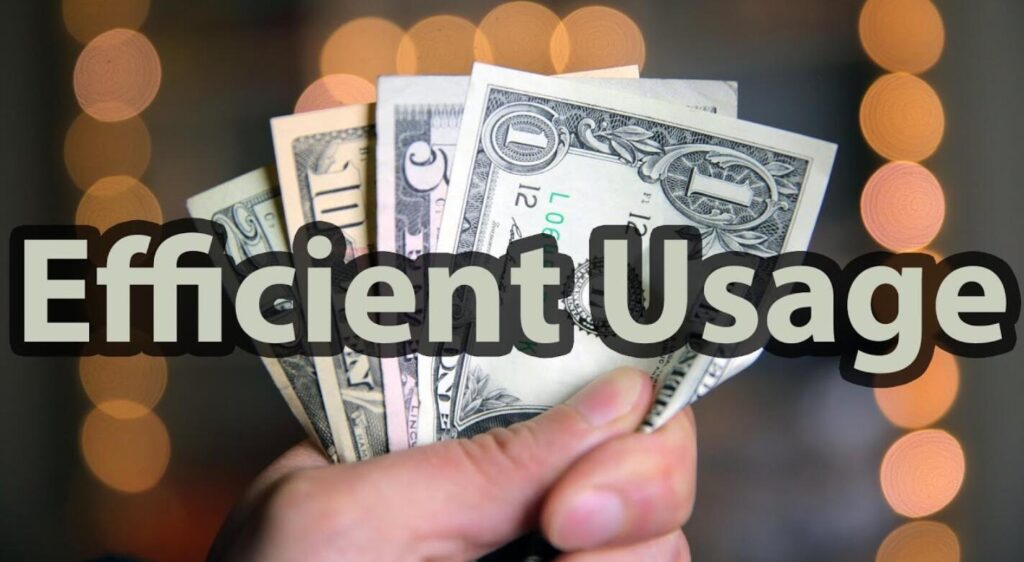
When it comes to mass production, silkscreen printing is by far the most cost-effective option. Setting up a screen-making business can be expensive at first, but once it’s up and running, it’s easy to make a lot of them at a low cost per unit. Because it works so quickly, it’s a good choice for projects that need to print a lot of copies.
3. Excellent and Detailed Prints

It is very good at making precise, bright, high-quality pictures with silkscreen printing. It can print images and features that are too small or complicated for other printing methods to handle. This skill makes sure that even the smallest features are sharp and clear, which improves the end product’s overall look.
4. Fluidity of Ink and Material Application

The method can be used with different kinds of inks, like solvent-based, UV-curing, and two-component inks, which are all good for different uses and levels of toughness. Plus, silkscreen painting doesn’t just work on certain metals; it also works well on aluminum, stainless steel, brass, and other metals, so it can be used for a lot of different things.
5. Scalability

You can use silkscreen printing for both small and big jobs. It is flexible, so it’s easy to make more of it without making the quality or speed of production worse. This scalability makes sure that makers can easily meet a range of demand sizes, from small-run products to ongoing needs for large volumes.
Silkscreen Printing on Metal: Common Applications
Thanks to its longevity and high-quality finish, silkscreen printing on metal can be used in many different fields.
1. Automotive Industry

In the car industry, silkscreen printing is commonly used to make license plates and nameplates that last a long time and are easy to read. This method makes sure that the print can stand up to different weather conditions, like sun, rain, and chemicals that are often found on roads.
Being able to make high-contrast pictures makes sure that small features can be seen and read from far away, which is important for both looks and following traffic laws (4).
2. Electronics

In the electronics business, silkscreen painting is very important, especially for marking circuit boards and metal housings.
3. Advertising Signs

Silkscreen printing is often used for outdoor signs and billboards because it makes colors that are bright and last a long time, which is important for outdoor advertising.
4. Decorative Items

Custom metal gifts and souvenirs can be made with bright and detailed patterns that can be printed on silkscreen.
Silkscreen ink can be used on a wide range of metal surfaces and finishes, which lets artists make one-of-a-kind artistic things that people will want to buy (5).
5. Safety and Instructional Labels on Machinery

To put safety and instruction signs directly on machines and tools, silkscreen printing is very important in the industry sector.
Challenges in Silkscreen Printing on Metal
Silkscreen printing on metal is a precise and flexible way to add images and text to metal surfaces. But it also has some problems that need to be carefully thought out and dealt with.
Difficulty In Printing Intricate Designs
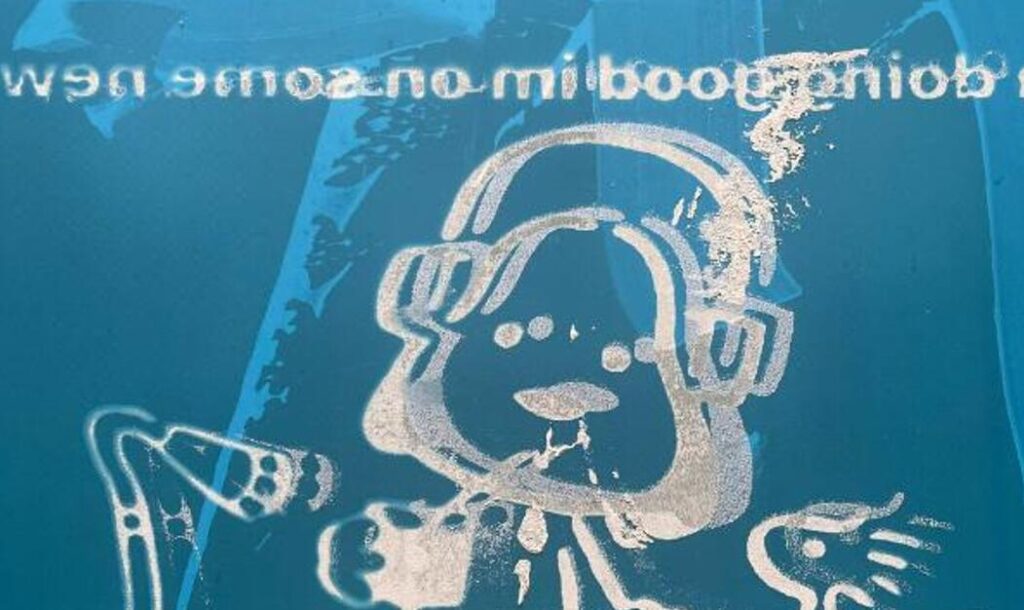
One of the hardest things about silkscreen painting small patterns on metal is making sure the design stays clear and intact. To get clear details, fine designs need screens that are very accurate and have the right frame count.
Also, it’s important to carefully control the thickness of the ink. If the ink is too thick, it can blur the details, and if it’s too thin, it might not be opaque enough or run under the stencil, making the prints blurred or unclear.
Investing In Tools And Materials

Setting up a silkscreen printing on metal business can cost a lot at first. A good print job needs high-quality colors that work with metal, as well as special screens and squeegees.
The costs of starting up also include printing tools like exposure systems for setting up the screen and drying units for finishing the colors. Solvent-based paints can be bad for your health and the environment, so you also need to make sure you have good airflow. This equipment needs to be maintained, screens need to be replaced every so often, and products like inks and emulsions need to be bought.
Technological Innovations In Silkscreen Printing On Metal
Let’s take a closer look at these technological advances that will shape the future of silkscreen printing on metal.
Innovations In Screen Materials And Inks

There are always new technologies being developed for silkscreen printing on metal, especially for making new inks and screen materials that make prints better in terms of quality, longevity, and usefulness.
Also, new screen materials are being made so that they can handle the pressure of metal printing better and let the artwork have more fine details.
Utilization Of Environmentally Friendly Printing Methods

Concerns about the environment are pushing the silkscreen printing business to make and use eco-friendly inks, like those that are water-based or made from recyclable materials, and looking for ways to do things that use less energy and make less waste.
In addition, the printing industry is looking into ways to safely reuse old inks and chemicals and recycle screens and other materials. This will reduce the damage that the printing process does to the earth (6).
How Long Do Silkscreen Printing On Metal Will Last?
Metal silkscreen prints are very long-lasting and are made to work in a wide range of situations.

When you use special inks made for metal surfaces and heat to cure them, you can often get a picture that doesn’t fade, scratch, or react badly with chemicals. Because of this, silkscreen printing is the best way to make images that will last for a long time, like on car parts and public signs.
Is It Possible To Print With A Silkscreen On Metal And Have A Very High Resolution?
Yes, you can get fine features and high resolutions when you silkscreen print on metal. The important things are the mesh count of the screen, the quality of the pattern, and how well the squeegee is used.

Screens with more meshes can put down thinner levels of ink, which lets you get more detailed images and clear lines. However, the texture of the paper and the thickness of the ink also have a big effect on how clear the end picture is.
Can Silkscreen Printing On Metal Be Considered Environmentally Friendly?
Instead of solvent-based inks, water-based or UV-curable inks can be used in silkscreen printing to make it more eco-friendly. These inks are better for the earth and can cut down on dangerous pollution.
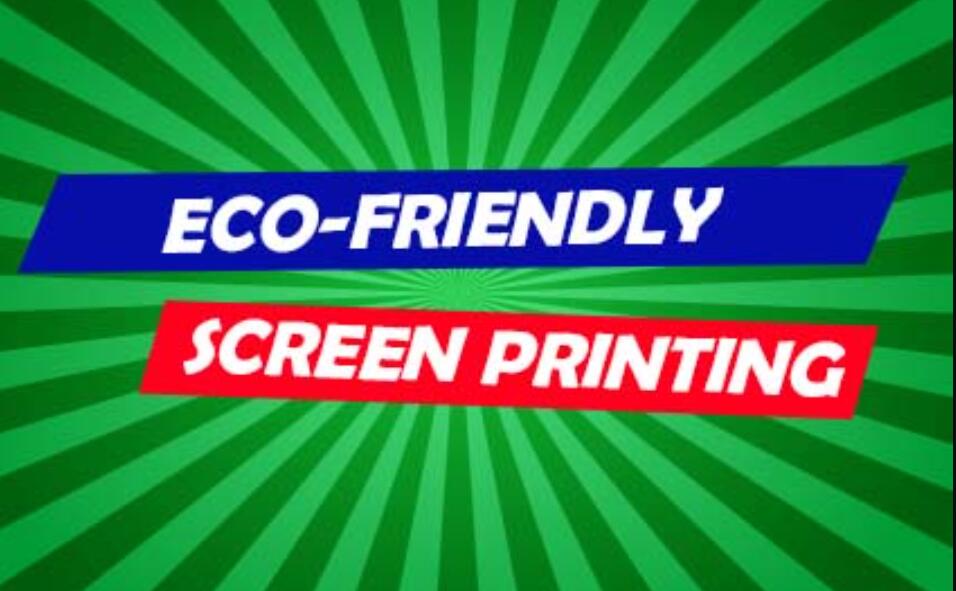
Also, improvements in how screens are made and cleaned are meant to cut down on waste and make silkscreen printing on metal a more environmentally friendly choice. As printing standards change, green printing methods are becoming more popular.
Conclusion
Silkscreen printing on metal has many benefits, such as being durable and able to make fine features, making it suitable for both practical and decorative uses.
This method makes prints that last a long time and can stand up to chemicals and bad weather, making it perfect for outdoor signs, the car, and electronics industries. It can handle complicated designs, so it can be used for many different kinds of goods that need clear and colorful images.
References
[1] Silkscreen Printmaking: https://www.britannica.com/technology/silkscreen
[2] This is The Real History of Screen Printing: https://screenprintingdog.com/screen-printing/history-of-screen-printing/
[3] Uncover the Fascinating History of Screen Printing: https://lambca.com/history-of-screen-printing/
[4] Silk Screen Printing on Metal: Everything You Need to Know: https://www.foismetal.com/blog/silk-screen-printing-on-metal-everything-you-need-to-know/
[5] From Basics to Mastery: What is Silk Screen Printing on Metal?: https://shengenfab.com/screen-printing-on-metal/
[6] Silk Screen Printing on Metal: Exploring the Applications, Advantages and Considerations: https://www.dawnbreezetrading.com/silk-screen-printing-on-metal-exploring-the-applications-advantages-and-considerations/


